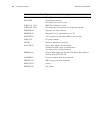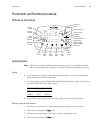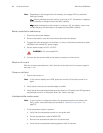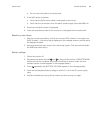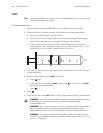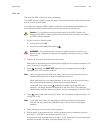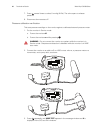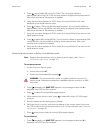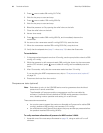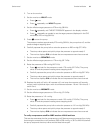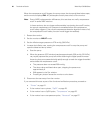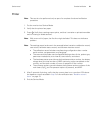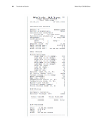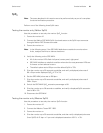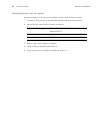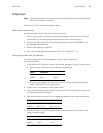
18 Functional verification Welch Allyn VSM 300 Series
2. Press once to select 80 mmHg (10.7 kPa).
3. Wait for the pump to start and stop.
4. Press once to select 150 mmHg (20 kPa).
5. Wait for the pump to start and stop.
6. Bleed the pressure to 0 by opening the relief valve on the bulb.
7. Close the relief valve on the bulb.
8. Have a timer ready.
9. Press once to select 300 mmHg (40 kPa), and immediately observe the
manometer.
10. As soon as the manometer reads 5 mmHg (0.67 kPa), start the timer.
11. When the manometer reaches 250 mmHg (33.3 kPa), stop the timer.
12. Verify that the elapsed time (step 11 minus step 10) is less than 8 seconds.
To test deflation
1. If the pressure has dropped more than 10 mmHg, use the pump bulb to raise it to 300
mmHg ± 5 mmHg.
2. While the pressure is still at approximately 300 mmHg (as shown by the manometer
and the SYS window), press once to select 0 mmHg, and immediately start the
timer.
3. After 10 seconds, verify that the manometer reads less than 15 mmHg.
If you are doing the NIBP overpressure test, skip to “Overpressure tests (optional)”
on page 18.
4. Disconnect the hose from the monitor.
Overpressure tests (optional)
These tests demonstrate that:
• the monitor cannot exceed the maximum allowable cuff pressure for adults (280
mmHg), pediatrics (200 mmHg), and neonates (141 mmHg)
• the overpressure cutoff feature shuts down the pump and dumps pressure before
the pressure reaches 330 mmHg (44 kPa)
To verify maximum allowable cuff pressure for NIBP version 3.20.00
1. Assemble one of the test setups illustrated on page 16, using an adult cuff or cuff
simulator.
Note
Redundant circuitry in the VSM 300 series monitor guarantees that the blood-
pressure cuff cannot overinflate.
The allowable cuff pressure and the overpressure cutoff are controlled by
software. A software failure (a defective PROM) would generate a checksum
error, disabling monitor operation and setting it in a safe mode.



